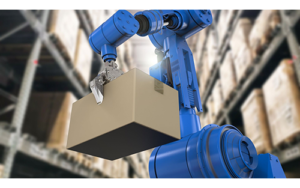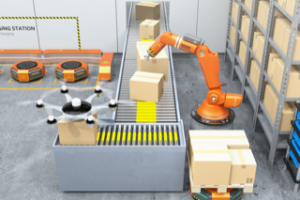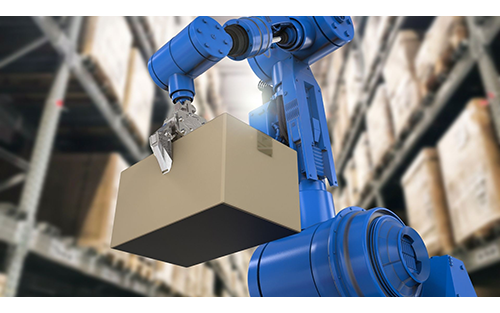 When we imagine automation, we picture a futuristic warehouse operation where robots are assigned with all the heavy lifting. However, that is far from reality. Industrial automation has been synonymous with the logistics industry for decades. With an increasing demand for faster, more efficient, and cost-effective supply chains, the use of robotics in warehouses has been rising. Continuing our previous blog, “Guide To Different Types Of Automation Robots”, we’ll talk about the challenges prohibiting companies from adopting warehouse automation at a large scale.
When we imagine automation, we picture a futuristic warehouse operation where robots are assigned with all the heavy lifting. However, that is far from reality. Industrial automation has been synonymous with the logistics industry for decades. With an increasing demand for faster, more efficient, and cost-effective supply chains, the use of robotics in warehouses has been rising. Continuing our previous blog, “Guide To Different Types Of Automation Robots”, we’ll talk about the challenges prohibiting companies from adopting warehouse automation at a large scale.
First, let’s look at the market trends in warehouse automation.
According to a recent report by MarketsandMarkets, the global market for robotics and automation in warehouses is expected to grow at a CAGR of 14.0% between 2021 and 2026. The landscape in India is similar too. Reports from Technavio suggest that the Indian market is expected to grow at a CAGR of 15.3% between 2021 and 2026. But, as the adoption of warehouse automation continues to grow, so do the challenges. Let’s look at some of the most prominent challenges in the industry:
Breaking down the cost barrier in warehouse robotics
The cost of purchasing, installing, and integrating robots into the warehouse system can be substantial, making it difficult for small and medium-sized enterprises (SMEs) to adopt the technology. This high investment also means that companies must carefully scrutinize this technology’s potential benefits and weigh them against the costs.
Bridging the gap between modern and legacy systems
Ensuring seamless integration of robots into existing warehouse systems is
critical for their successful implementation. Companies must work with vendors to ensure that the robots integrate with their existing systems, processes, and equipment. If not done correctly, it can lead to decreased efficiency and reliability.
The key to coherent automation is a skilled workforce
The need for more trained personnel to operate and maintain the robots is a major challenge for many companies, leading to significant delays in implementing automation systems. To avoid increased downtime, companies must invest in their workforce training to ensure that they can effectively operate and maintain the infrastructure.
Staying competitive and efficient with regular upkeep
It’s essential to keep robotic systems functioning smoothly to avoid unexpected downtime.  Proactive approaches to upkeep can also help companies identify and resolve any potential issues before they become significant problems. Extra costs and systems for regular maintenance of the robots add to the complexity of deploying robots in a warehouse.
Proactive approaches to upkeep can also help companies identify and resolve any potential issues before they become significant problems. Extra costs and systems for regular maintenance of the robots add to the complexity of deploying robots in a warehouse.
Securing automated warehouses against cyberattacks
The increasing use of robots in the workplace has also raised cybersecurity concerns. Ensuring the security of robots and their data is a significant challenge for companies, as it can have consequences if the data is compromised. Companies must ensure that they have robust cybersecurity measures to protect their systems and data.
Addressing the lack of standardization in automation
Finally, the automation industry lacks standardization, making it difficult for companies to compare and select the best robots for their needs. As companies struggle to find the best solution for their needs, they must carefully evaluate the available options with vendors to ensure they select the best automation solution.
Stepping into the future is challenging but not impossible
The high initial investment, integration with existing systems, and lack of standardization are significant challenges that need to be addressed to ensure the successful implementation of robotics in warehouses.
However, the potential benefits of robotics far outweigh the challenges with improved supply chain efficiency, reduced costs, and increased competitiveness in the market, and the trend toward automation will only continue to grow. Companies that are investing in warehouse automation and training their workforce will be the first ones to reap the benefits.
Stay tuned to Rucha Yantra’s Knowledge Corner for more content related to next-gen technologies and their impact on business.



